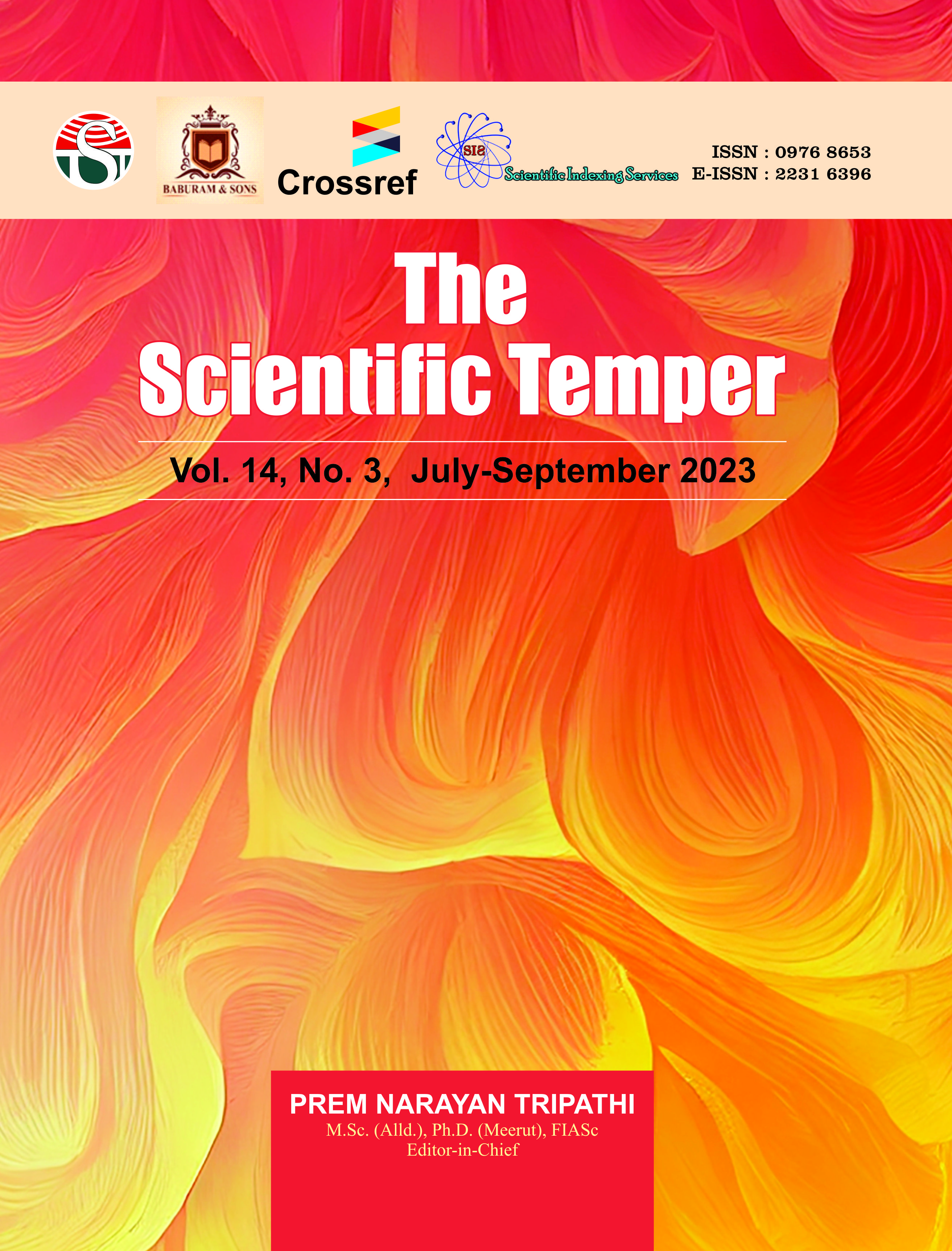Research on the current situation and influencing factors of college students learning engagement in a blended teaching environment
Downloads
Published
DOI:
https://doi.org/10.58414/SCIENTIFICTEMPER.2023.14.3.02Keywords:
Bended learning, Learning engagement, Teaching interaction theory.Dimensions Badge
Issue
Section
License
Copyright (c) 2023 The Scientific Temper

This work is licensed under a Creative Commons Attribution-NonCommercial-ShareAlike 4.0 International License.
Taking students from a university who participate in blended teaching of innovation and entrepreneurship as the research object, a model of the influencing factors of college students’ learning engagement in a blended teaching environment was constructed. This paper constructs a model of influencing factors of college students’ learning engagement in the blended teaching environment. The results showed that individual, teacher, and peer factors all have a certain degree of influence on learning engagement, but the degree of influence is significantly different. Teacher factors have the greatest impact, followed by individual factors, and peer factors have the smallest impact; Environmental factors have a moderating effect on the relationship between individual factors, teacher factors, peer factors, and learning engagement, but the direction of action is not consistent. The positive effect of individual factors, teacher factors, and peer factors on learning engagement increases with the increase of environmental factors, while the positive effect of teacher factors and peer factors on learning engagement weakens with the increase of environmental factorsAbstract
How to Cite
Downloads
Similar Articles
- Saba Naaz, K.B. Shiva Kumar, Integrated deep learning classification of Mudras of Bharatanatyam: A case of hand gesture recognition , The Scientific Temper: Vol. 14 No. 04 (2023): The Scientific Temper
- K. Sreenivasulu, Sampath S, Arepalli Gopi, Deepak Kartikey, S. Bharathidasan, Neelam Labhade Kumar, Advancing device and network security for enhanced privacy , The Scientific Temper: Vol. 14 No. 04 (2023): The Scientific Temper
- V. Babydeepa, K. Sindhu, Piecewise adaptive weighted smoothing-based multivariate rosenthal correlative target projection for lung and uterus cancer prediction with big data , The Scientific Temper: Vol. 15 No. 03 (2024): The Scientific Temper
- Shaik Abdulla P., Abdul Razak T., Retrieval-Based Inception V3-Net Algorithm and Invariant Data Classification using Enhanced Deep Belief Networks for Content-Based Image Retrieval , The Scientific Temper: Vol. 15 No. spl-1 (2024): The Scientific Temper
- G. Deena, K. Raja, M. Azhagiri, W.A. Breen, S. Prema, Application of support vector classifier for mango leaf disease classification , The Scientific Temper: Vol. 14 No. 04 (2023): The Scientific Temper
- Nithya R, Kokilavani T, Joseph Charles P, Multi-objective nature inspired hybrid optimization algorithm to improve prediction accuracy on imbalance medical datasets , The Scientific Temper: Vol. 15 No. 03 (2024): The Scientific Temper
- Ayalew Ali, Determinants of banks profitability: Do capital structure and dividend policy matters? , The Scientific Temper: Vol. 16 No. 04 (2025): The Scientific Temper
- Amala Deepa V., T. Lucia Agnes Beena, Enhancing data imputation in complex datasets using Lagrange polynomial interpolation and hot-deck fusion , The Scientific Temper: Vol. 16 No. 02 (2025): The Scientific Temper
- R. Thiagarajan, S. Prakash Kumar, Performance of public transport appraisal using machine learning , The Scientific Temper: Vol. 15 No. spl-1 (2024): The Scientific Temper
- Anil Kumar, Aditya Kumar, Synthesis, spectral characterization and antimicrobial effect of Cu(II) complexes of schiff Base Ligand, N-(3,4- dimethoxybenzylidene)-3-aminopyridine (DMBAP) Derived from 3,4-dimethoxybenzaldehyde and 3-aminopyridine , The Scientific Temper: Vol. 14 No. 01 (2023): The Scientific Temper
<< < 7 8 9 10 11 12 13 14 15 16 > >>
You may also start an advanced similarity search for this article.



